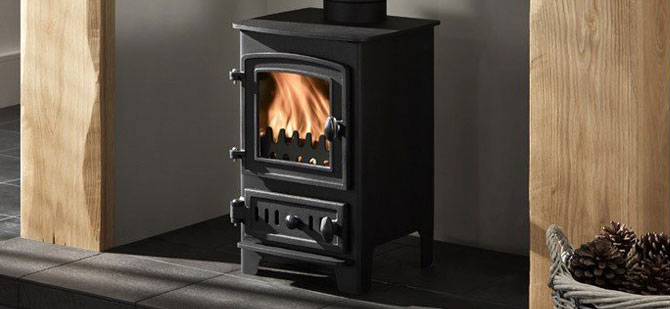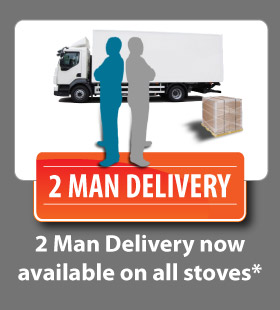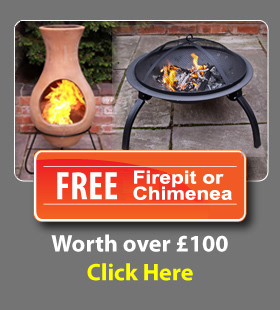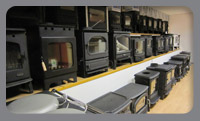Stove Features
There are a variety of features to contemplate before purchasing your new stove. Here is an alphabetical glossary of some of what we consider to be the most important, but please let us know if there are any we have missed!
A system that flows air in at the top front of a stove, keeps the glass clear of smoke and soot, and provides an air supply for secondary burning, which gives a good view of the flames and more efficient use of the fuel
Container that holds the ash ready for removal
Boiler fitted in place of the back firebrick, which provides a hot water supply and reduces the direct room heating output of the stove
System for gas stoves that allows the stove to be fitted to an outside wall where there is no chimney available
Hood above the stove, designed to complement the stoves design, and assist integration of the stove into the fireplace
Grate that is made to withstand the high temperatures generated by petrochemical-based fuels
Additional panel, usually behind the stove, that helps the warmth reach the air in the room, increasing the stoves heating efficiency
Stoves with doors front and back, designed to be viewed from both sides. Useful when the stove is fitted in a wall between two interconnected rooms
System that lights gas and oil stoves at the touch of a button
Fire bricks are used in many wood burning stoves and multifuel stoves to help protect the steel or cast iron bodies while at the same time increasing the internal firebox temperatures for better combustion
A ready mixed ground putty which dries rock hard once exposed to heat.
A heat resistant rope that goes hand in hand with fire cement. Can be used in conjunction with Fire Cement to help fill larger gaps.
Adjustable controls that reduce the size (and suction) of the flue, allowing greater heating efficiency in use, and easier lighting from cold
Choice of rear or top connections for the flue
Higher "roof" on the stove, making it suitable for higher fireplace arches and increasing heat output
Selection of different heights for a stove, allowing different installation heights in the fireplace
Prevents logs from sliding forward and out when the door is opened
Space to store and give a final dry to seasoned logs, prior to burning
The longest size of log that you can fit into the stove
Slow, controlled burning that allows the stove to remain alight through the night, ready to be "turned up" in the morning
The register plate is often a part that is overlooked when going to buy a stove. Register plates are an essential component that is needed when fitting a stove, they prevent any debris caused by the stove or the flue falling back down onto your hearth.
Device that allows you to control a gas, oil or electric stove from the comfort of your chair
Mechanism used to clear out the ash from the grate without opening the door, so that there is no dust or mess
Control that regulates the amount of air introduced above the grate, controlling secondary combustion
Opening in the side of the stove that allows you to load longer logs into the stove
Systems that burn the fuel so efficiently that little or no smoke is emitted from the chimney.
See our Clean Burn article.
Method of introducing air to the combustion products just before they are vented up the chimney, to extract the remaining energy and further clean the flue products
Controls that regulate the burning to give an even temperature in the room
Opening in the top of the stove that allows you to add fuel from above
Insulated flue that can be used as external or internal flue system.
See our Twin Wall systems
















